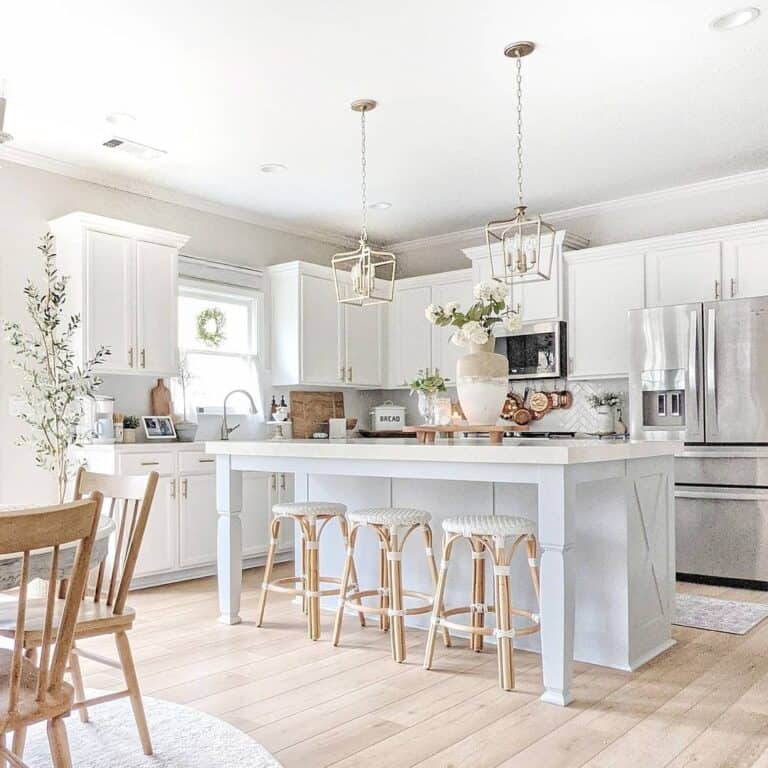Sturdy and Stylish Options for High-Quality Legs For Kitchen Island
Sturdy and Stylish Options for High-Quality Legs For Kitchen Island
Blog Article
A Guide to Choosing the Perfect Legs For Kitchen Area Island for Your Home
Selecting the suitable legs for your kitchen island is a nuanced decision that influences both the functionality and visual charm of this main room. Factors such as height, products, and design play a critical function in balancing your island with the total kitchen design. Furthermore, comprehending the relevance of security and upkeep can considerably influence your option. As you consider these aspects, it becomes apparent that the best legs can change not only the look of your kitchen area but additionally its use for several years to find. What certain features should you prioritize in this selection procedure?

Recognizing Cooking Area Island Legs
When choosing legs for a cooking area island, it's vital to comprehend their practical and visual functions in the total design. The legs work as a critical support group, making certain security and durability for the island, which typically functions as a workspace, eating location, or collecting spot. The choice of product and building technique must be robust adequate to stand up to everyday usage and possible wear.
In enhancement to their structural obligations, legs add significantly to the island's visual charm. They can enhance the kitchen's style, whether with conventional, contemporary, or diverse styles. The elevation and percentage of the legs are additionally vital considerations; they need to integrate with the island's counter top height while making certain comfy seating for those using the space.
Additionally, the leg style can affect the general flow of the kitchen. Open, airy leg styles can produce a sense of agility, while solid, significant legs may communicate a much more grounded and steady aesthetic - Legs For Kitchen Island. Recognizing these useful and visual facets will lead home owners in making informed options that match their kitchen area's design and boost its usability
Popular Styles and Materials
The choice of legs for a cooking area island incorporates a range of prominent styles and materials, each offering distinct attributes that can enhance both performance and aesthetic appeals. Traditional legs normally display elaborate information and craftsmanship, enhancing classic cooking area styles.

Height and Stability Factors To Consider

The legs of the kitchen island need to offer adequate assistance, making sure that the framework can hold up against daily use without moving or tottering. Product selection plays a substantial function in security; metal legs, for instance, have a tendency to provide greater toughness contrasted to timber.
Matching Your Kitchen Area Visual
Selecting the ideal legs for your kitchen area island goes past capability; it likewise plays a substantial duty in the general visual of the space (Legs For Kitchen Island). When selecting legs, take into consideration the design style of your kitchen.
Legs that complement or comparison with your island's surface and surrounding kitchen cabinetry can create aesthetic consistency or striking focal factors. Furthermore, think about the surface of the legs; matte, shiny, or textured surfaces can considerably influence the total feeling of the kitchen area.
Installation and Upkeep Tips
Installing cooking area island legs needs careful focus to detail to make certain both security and aesthetic appeal. Utilize a stud finder to find wall surface studs if you are connecting the legs to a wall surface or making use of brackets for added support.
When protecting the legs, utilize high-quality screws and, if necessary, timber adhesive for extra strength. For steel legs, ensure that you are making use of suitable anchors and devices to protect against damage to your flooring. It is advisable to look for levelness after installation, making changes as required to prevent tottering.
Maintenance is just as crucial for longevity - Legs For Kitchen Island. On a regular basis examine the legs for any kind of signs of wear or helping to loosen, particularly in high-traffic areas. Clean the legs with an appropriate cleaner, avoiding abrasive products that may damage the surface area. For wooden legs, consider applying a wood conditioner occasionally to keep their finish. By following these setup and upkeep pointers, you can ensure that your kitchen area island legs description stay both aesthetically attractive and useful.
Final Thought
In conclusion, choosing the appropriate legs for a kitchen island necessitates cautious consideration of height, security, and aesthetic compatibility. By picking ideal materials and designs that line up with the overall kitchen area style, performance can be improved while maintaining aesthetic allure. Correct installment and ongoing maintenance even more add to the sturdiness and long life of the kitchen island. Inevitably, thoughtful leg selection plays a vital role in raising both the functionality and design of the cooking area space.
When picking legs for a kitchen area island, it's important to understand their practical and visual functions in the general style. Open, airy leg styles can develop a feeling of lightness, while strong, substantial legs may share an extra grounded and steady visual. The legs of the kitchen island should offer sufficient assistance, making sure that the framework can hold up against everyday usage without tottering or changing.Setting up cooking area island legs calls for click site cautious interest to detail to guarantee both security and visual allure.In conclusion, picking the suitable legs for a kitchen area island requires careful consideration of height, stability, and aesthetic compatibility.
Report this page